
Natalie Fox
Makeup has been used throughout the ages to mask imperfections, create “looks”, enhance facial features and generally beautify; but at what price to the environment and your health?
A big bucks industry but inherently unsustainable
According to Forbes the global cosmetic industry is worth about $532 billion, and estimated to grow to a market value of almost $805 billion by 2023. However, with the makeup industry is responsible for high levels of water usage, global emissions and single use plastic; this mass consumption of finite resources currently makes the cosmetic industry one of the least sustainable in the world.
Recently, evidence of petrochemicals, parabens and phthalates in makeup products has also come to light; questioning many of the ingredients and processes used in cosmetics. However, awareness and impact of evident toxins on humans as well as the environment, according to “Oprah Magazine”; has paved the way for more organic, Eco friendly makeup brands to emerge and “sustainable makeup choices" are currently trending.

Where did it all start?
Whilst the historical origins of cosmetics lie in ancient Egyptian and Roman times, it was the Hollywood film era of the 1920s that sparked a global industry; technological advancements at the time enabled a rise in production; along with regulation of products. Companies in the US were (and still are) governed by the Food and Drug Administration (FDA) under the 1938’s Food, Drug, and Cosmetic Act; which was updated in 1960 to account for the growing number of side effects and carcinogenic potential within makeup products. In Europe, the EU has the 2009 “Cosmetic Regulation”.
Post World War 2 cosmetic corporations focussed on the emerging female market; using advertisements endorsing the benefits of being “attractive” and the global makeup industry has been growing ever since, both in terms of its revenue and negative environmental impact.

Non eco friendly makeup ingredients harmful to health
The Derm Review documents a list of toxins, common in many cosmetic products, and below we highlight three to really avoid.
Petroleum
Goop’s interview with Karen Behnke (author of Juice Beauty) reveals that petrochemicals are incredibly prevalent in beauty products. They are a huge health concern, take 1,4-dioxane for example; a substance known to potentially contribute to some cancers; it’s a kidney toxin, neurotoxin and a respiratory toxin. The Environmental Working Group (EWG) found that an alarming 22 percent of all conventional personal care products contain unsafe levels of 1,4-dioxane.
Parabens
Awareness has grown considerably about the existence of parabens within cosmetics. Parabens are known to be xenoestrogens, i.e. they mimic oestrogen in the body. This has been linked to breast cancer and reproductive issues. Researchers believe there is a relationship between parabens and tumors. It also appears that parabens can be stored in the body, resulting in a cumulative effect that can damage health over time. While there is currently no scientific evidence to confirm that parabens directly cause cancer, research is ongoing.
Phthalates
Phthalates are substances widely used as plasticizers. Found in almost all polyvinyl chloride (PVC) products, Phthalates have also been used in perfumes, deodorants, hairsprays, gels, nail polish, aftershave lotions and lubricants. They serve mainly as fixing agents so that a nail polish flakes less quickly and a perfume lasts longer. Phthalates’ effects on humans have not been studied extensively, but they are believed to be an endocrine-disrupting chemical (EDC) that can alter hormonal balance and potentially cause reproductive, developmental and other health issues.
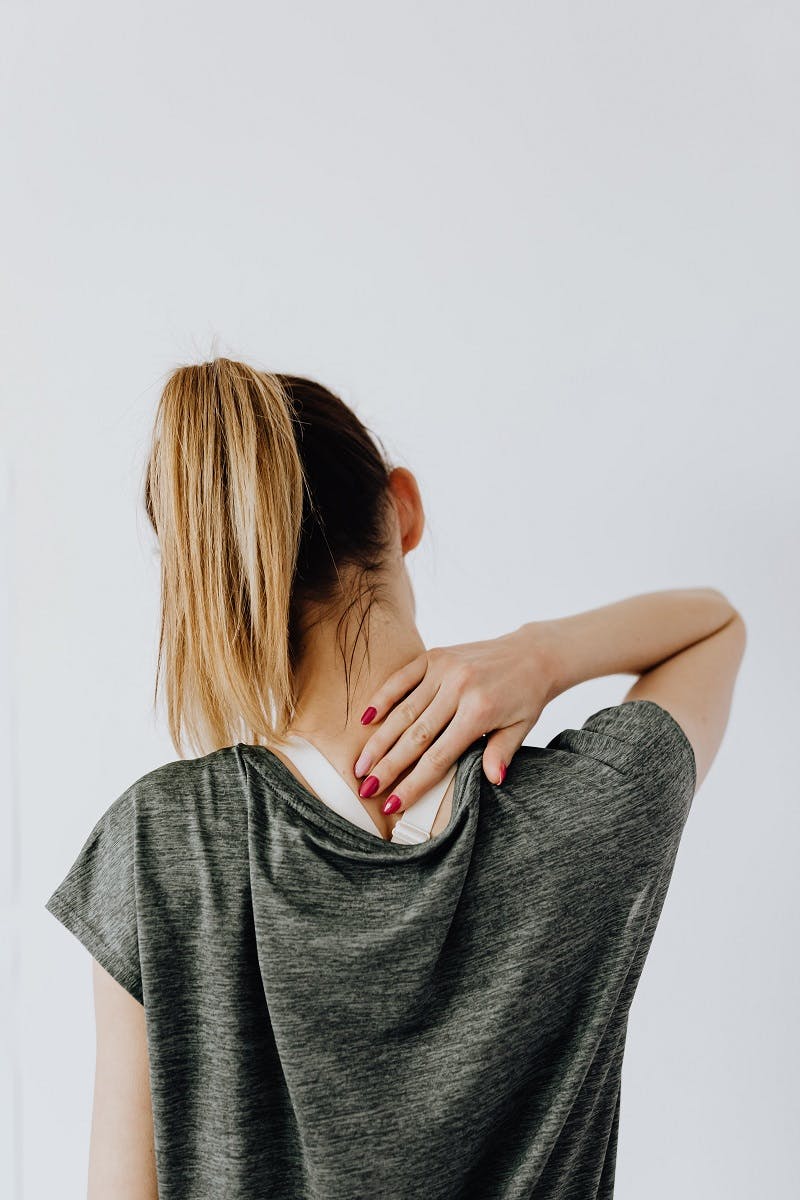

Take action now
Do you want to have a direct impact on climate change? Sir David Attenborough said the best thing we can do is to rewild the planet. So we run reforestation and rewilding programs across the globe to restore wild ecosystems and capture carbon.
Get involvedEnvironmental impacts of makeup
Despite scientific research emerging to warn us of the dangers having synthetic and chemical ingredients in our cosmetics can have on human health; there is a lack of evidence on what they do to the natural environment.
Two particularly contentious ingredients are octinoxate and oxybenzone; known for UV ray protection in sunscreens (but which also appear in foundations, hair dye, shampoo, nail polish and lip balms). They have been labelled responsible for bleaching coral reefs by leaching from the skin of sunbathers into the ocean. As you can see, in the Chemicals of Concern list below, all 7 cosmetic companies are yet to employ a policy on these chemicals despite Hawaii’s ban on non reef-friendly sunscreen starting Jan 2021.
Along with octinoxate and oxybenzone; butylparaben has been shown to cause coral reef bleaching, whilst other parabens have been showing up in dolphin and polar bear biopsies.
Another alarming ingredient is palm oil; according to Vogue “its derivatives also lurk in an astounding 70% of our cosmetics, where they serve as emulsifiers and surfactants”. Of course, we are no longer blind to the deforestation and devastating effects mono-cultured palm plantations have on native rainforests.
The growth of the palm oil industry has resulted in 39% of forest loss on the biodiversity-rich island of Borneo between 2000 and 2018. Other crucial, climate regulating rainforests are also being destroyed in Brazil, Malaysia, West Africa and other parts of Indonesia; including 43% of Tesso Nilo National Park in Sumatra. Look for the ingredient: Elaeis guineensis, to know if your beauty products contain palm oil.
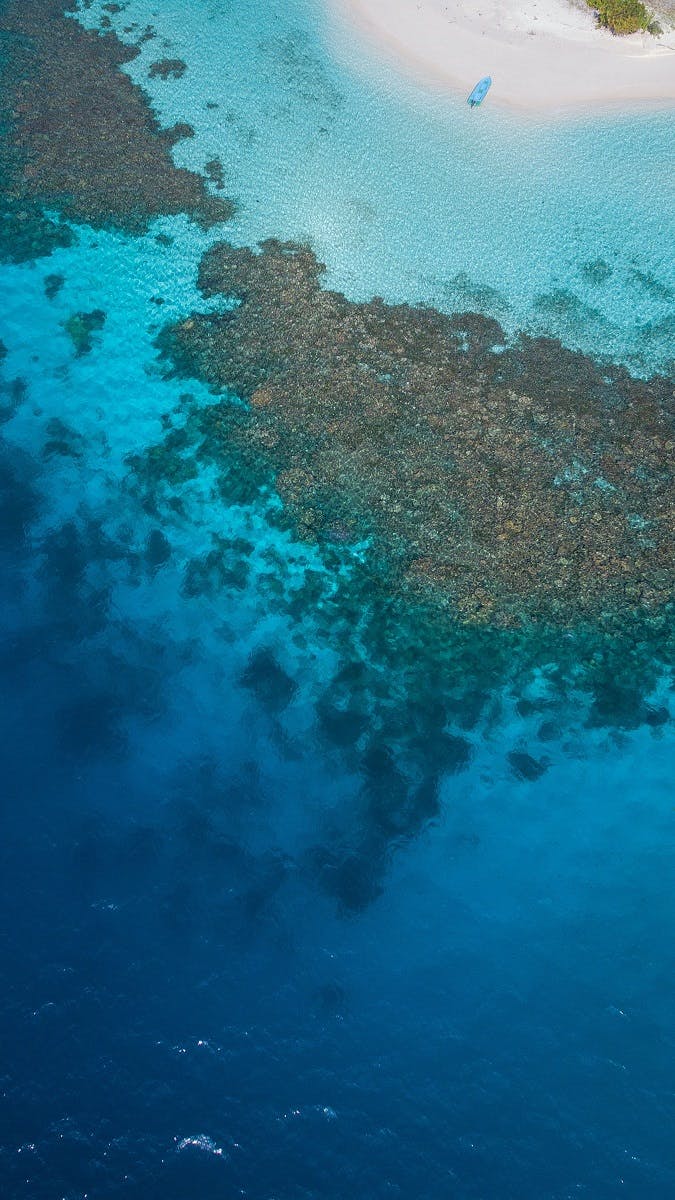
Makeup brands to avoid
The biggest industries are located in the US, Japan and Europe; with the world's current largest cosmetic companies L’Oréal, Unilever, Shiseido, and Estée Lauder. If you head over to the Campaign for Safe Cometics you can find a matrix of brands, chemicals and their policies regarding “chemicals of concern”.
Every day, the average woman uses about a dozen products containing more than 150 different ingredients; the Environmental Working Group created the Skin Deep® database as a way to combat serious deficiencies in cosmetics regulation. They also offer a free guide for choosing safer and more sustainable personal care products.
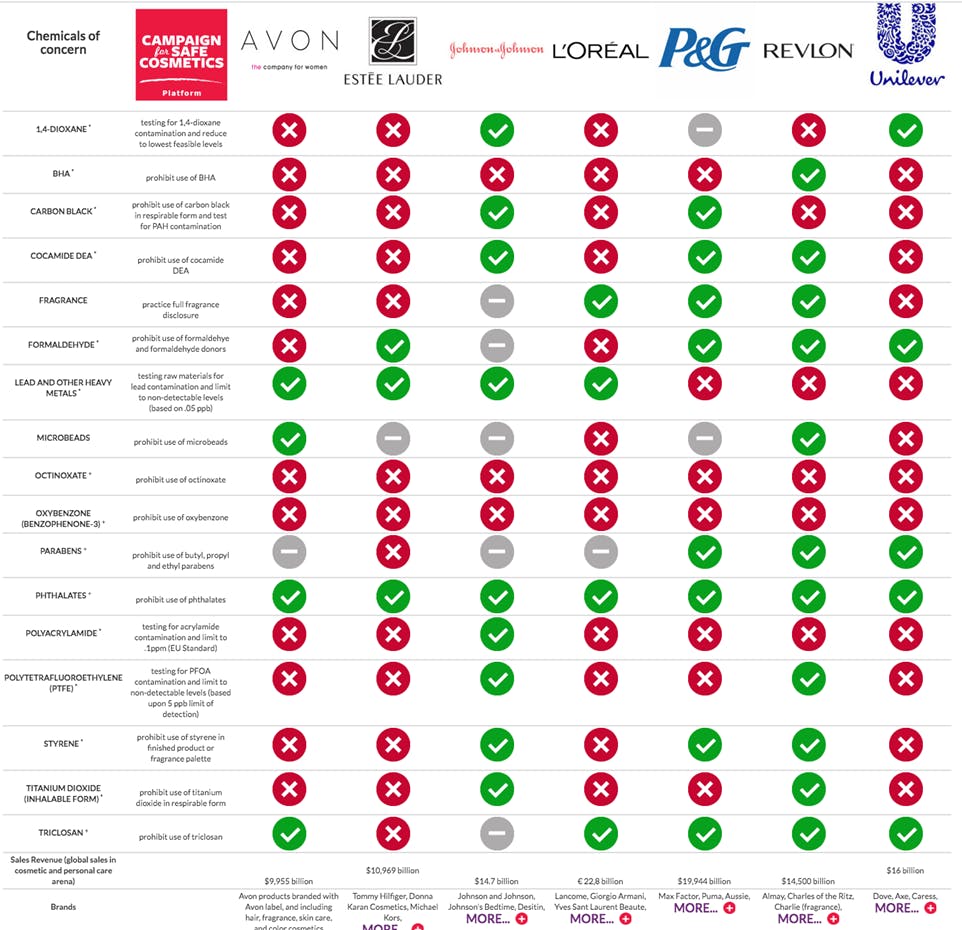
Make your own sustainable makeup
Creating sunscreen by using non-nano zinc oxide and oils with naturally occurring SPF has taken over DIY cosmetic blogs such as Wellness Mama. Making your own makeup is following suit; you can now find recipes for cinnamon foundation, beetroot blush and berry lip gloss.
There’s even a recipe for Seaweed mascara.
Plastic Free Mermaid has put together recipes for entirely natural makeup in her new book “I quit plastics”, including Cacao powder bronzer, saying if she wouldn’t eat it, she wouldn’t put it on her face.
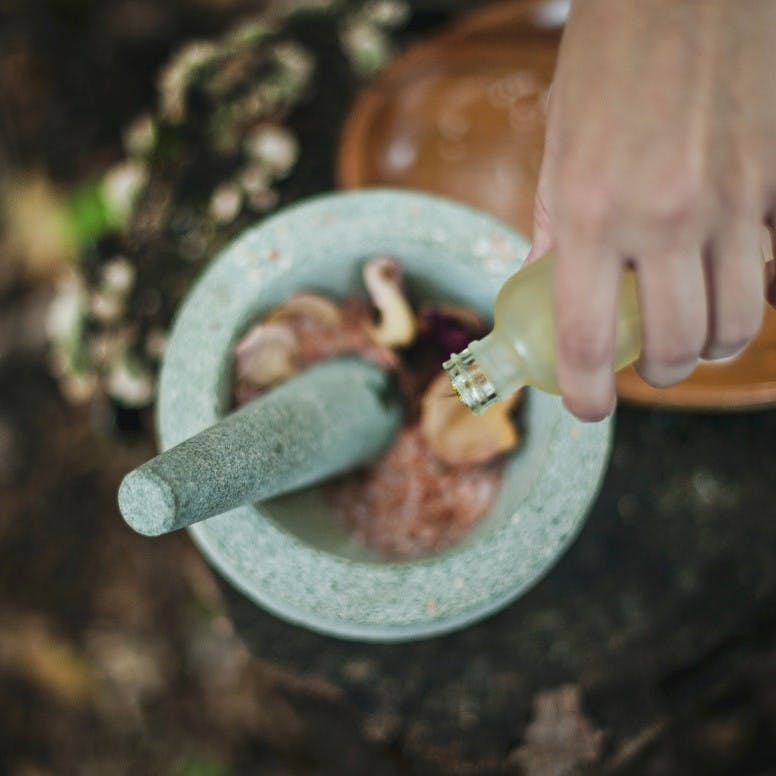
Zero waste makeup
Talking about plastics, most makeup products rely on single-use plastic packaging. The Telegraph reported the global cosmetics industry, generated over 142 billion units of packaging in 2018, most of which being non-recyclable.
Yet the big companies are committing to change. L’Oreal is aiming to make 100 percent of its packaging reusable, refillable, or compostable by 2025, and to source 50 percent of that packaging from recycled material.
Makeup not only relies on the packaging for its products, but there is also the added step of makeup removal. Cotton wool and synthetic face wipes are notoriously wasteful; yet there has been a resurgence of reusable cloth or eco friendly bamboo makeup pads such as Marley Monsters and Eco Panda wipes, which can be found at Plastic Freedom. To learn more, we can recommend reading our Going Zero Waste guide.
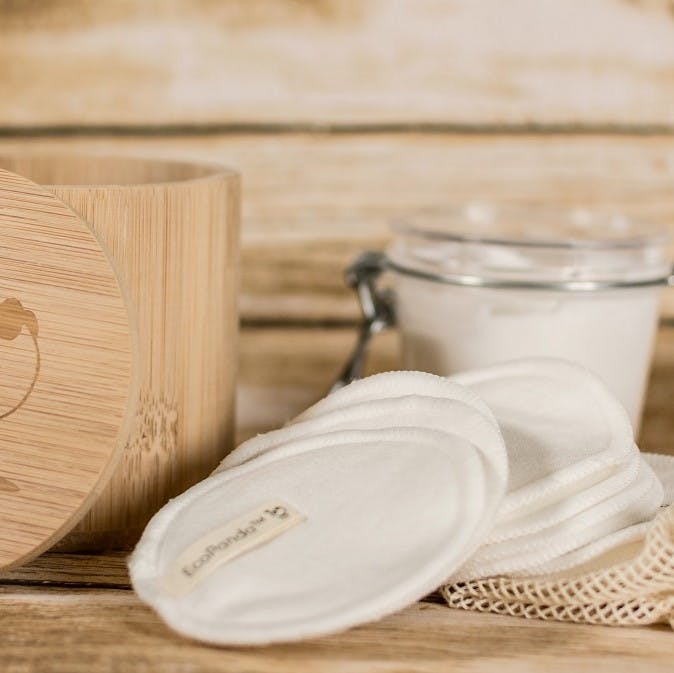
Plastic free makeup
Despite being a ban being enforced in many countries such as The US, UK and New Zealand, microbeads are worryingly, still showing up in our personal hygiene and cosmetics products, incuding Polyethylene (PE), Polypropylene (PP), Polyethylene terephthalate (PET), Polymethyl methacrylate (PMMA) or Nylon. Since it first started campaigning in 2012, Plastic Soup Foundation is now aware of more than 500 microplastic ingredients widely used in cosmetics and personal care products, and has launched a new app “Beat the Microbead” where you can search the products in your bathroom and makeup bag instantly. To learn more, we suggest checking out our living plastic free guide.

Recommended eco friendly makeup brands
It may be easy to sign off with the sentiment that those who choose to wear makeup should at least invest in conscious, sustainable cosmetic companies, who are purpose driven, with strong social values and environmental incentives; not just economic. However, these companies tend to have a much higher price point adding to the argument that purchasing “green” beauty products are a privilege rather than a choice.
Moral Fibres, Glow Organic in Brighton and The Future Kept all have ideas and options to shop zero waste makeup, whilst here are some ethical and sustainable makeup brands to look out for that shouldn’t break the bank:
Vapour: plant-powered, organic, vegan, cruelty-free, refillable, plastic free makeup. https://vapourbeauty.com/pages/our-story
All Earth (vegan, natural ingredients, plastic free, refillable, sustainable makeup materials) available from https://www.wearthlondon.com/eco-friendly-makeup/mineral-finishing-powder
Zao: vegan, organic, bamboo packaging, refillable, eco friendly makeup https://plasticfreedom.co.uk/collections/makeup
Lush Cosmetics: vegan, cruelty-free, handmade, ethical, naked packaging https://uk.lush.com/products/cruelty-free-makeup
Thankfully, affordable, sustainable makeup brands have become more successful and transparency is starting to emerge regarding cosmetics.
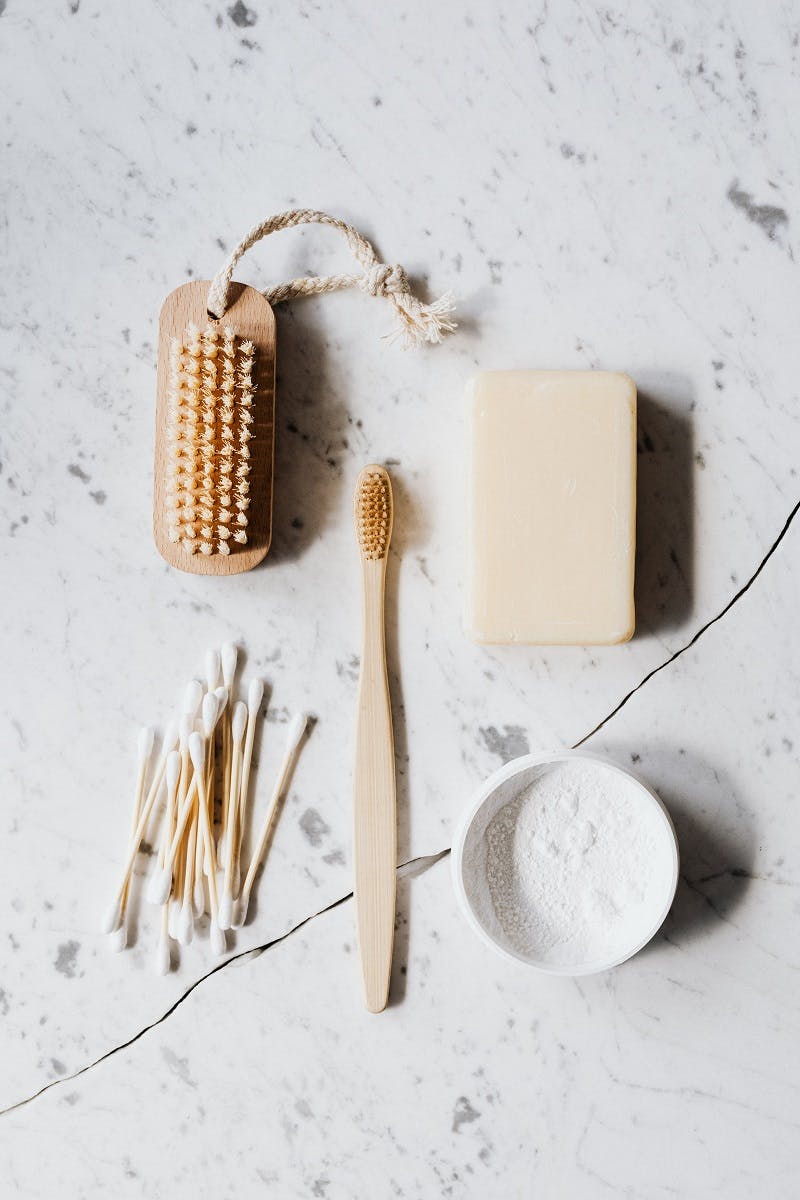
Sources & further reading

- “6 Trends Shaping The Future Of The $532B Beauty Business” - Forbes.com
- “What's In Your Personal Care Products?” - WebMD
 Read product labels and avoid: phthalates, parabens, petroleum, octinoxate and oxybenzone
Read product labels and avoid: phthalates, parabens, petroleum, octinoxate and oxybenzone